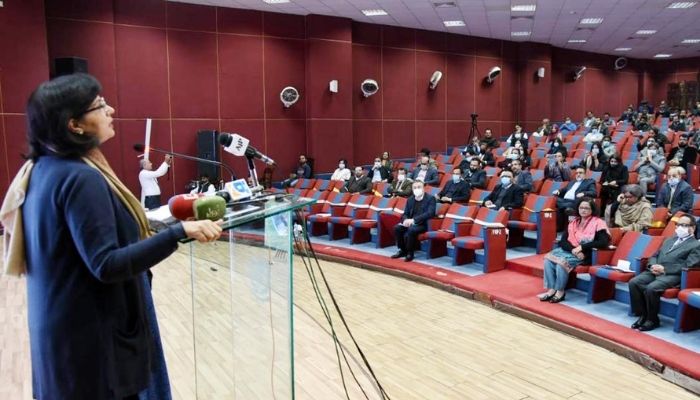Ehsaas Registry: South Asia’s first digital door-to-door survey
Ehsaas’ National Socioeconomic Registry is important because it will enable the federal government to move towards a new paradigm
January 22, 2022

Last week, we officially concluded door-to-door data collection for Ehsaas’ National Socioeconomic Survey. This extensive data collection exercise has enabled the building of the new Ehsaas Socioeconomic Registry, which includes information on 34.41 million families on a set of variables and proxy indicators (household status, education, disability, assets, agriculture, health) to assess the household socioeconomic status and poverty level.
The registry is unique and important for four reasons. First, because the survey is not just Pakistan’s but also South Asia’s first digital door-to-door ‘census-like’ survey. The registry which has been built as a result of this survey was a massive undertaking. To conduct this exercise, in addition to contracting out, indigenous capacity had to be built which entailed training, hardware procurement, software development, human resource hiring, management of several complex executions in tandem and engagement with provincial governments.
Surveys conducted in the past were fraught with challenges, owing to their being paper-based. Without inherent controls they became controversial. In Ehsaas’ survey, multiple digital safeguards and checks were built-in to hedge against abuse. Data collection was done through the Computer Assisted Personnel Interviewing Approach; this was enabled by many Apps, including a Discrepancy Resolution App.
To hedge against errors and abuse, a six-tier system was developed. Processes were automated end-to-end. Houses were digitally listed, so enumerators actually had to go on site and couldn’t fill a form sitting in a ‘hujra’ to curry favours. The form had inherent logical checks when it was filled in an online mode and a layer of supervisory oversight when filled offline. Third-party validations followed after a ‘survey batch’ was cleared. Then came the process of data validation for some of the demographic variables, and finally data profiling was done against wealth proxies, using the CNIC as the peg, before eligible lists are prepared.
The second reason why Ehsaas’ National Socioeconomic Registry is important is that it will enable the federal government to move towards a new paradigm of giving subsidies -- moving away from untargeted to targeted subsidies. The newly launched Ehsaas Rashan Riayat, which is a programme to deliver targeted subsidies is also drawing on these data.
Third, rather than being a static registry, the 2021 Ehsaas Registry is designed to evolve into a dynamic adaptive and shock response registry by March 2022. Through its features of on-demand registration, it will allow people to apply for programs when they are in need. This adaptive aspect of Ehsaas’ social protection operations will significantly improve resilience to shocks and will allow it to provide assistance during times of disaster.
In order to enable the Ehsaas Registry to transition to the “adaptive/dynamic mode”, 500 Ehsaas registration centres have already been established in each tehsil of the country. Currently, the registration centres are updating missing information/updating existing information.
In the fourth place, the registry is a critical foundation of the data management mechanism established under the One Window Ehsaas architecture. Data sharing and data access services will be enabled through the Cognitive API Architecture approach. Ehsaas implementing organisations and provinces will be able to access data through APIs for free. Data sharing for the Ehsaas Rashan Riayat Program has already been enabled through this approach.
Previously the 2010 BISP data was siloed; even provincial social protection agencies had to do extensive paperwork to access data and there were significant costs involved. Agencies connecting to the Ehsaas database through APIs will also be required to share back data -- and in this way, the 2021 Ehsaas National Socio-economic Registry will be significantly enriched, over time.
This approach will also enable transparency. By punching in the CNIC of an individual, an agency will be able to see what individual benefits the family is entitled to. Previously, there was no system to identify the kind of support a family was getting from the government system. Hence, some families with connections were getting multiple and others that were more deserving were often left out and there was no way one agency could know that a family requesting for support was receiving support from another agency. So, government social protection agencies were working in silos. Now, data integration has enabled each agency to share data but also view what benefits a family is getting.
The data-driven capacity of the government through Ehsaas’ National Socioeconomic Registry will enable effective targeting of social prediction benefits to the poorest segments of society, not just under the Ehsaas umbrella but will also power other social protection and welfare initiatives undertaken in the country by federal and provincial governments.
The writer is a senator and special assistant to the prime minister for poverty alleviation and social safety. She tweets @SaniaNishtar
Originally published in The News











